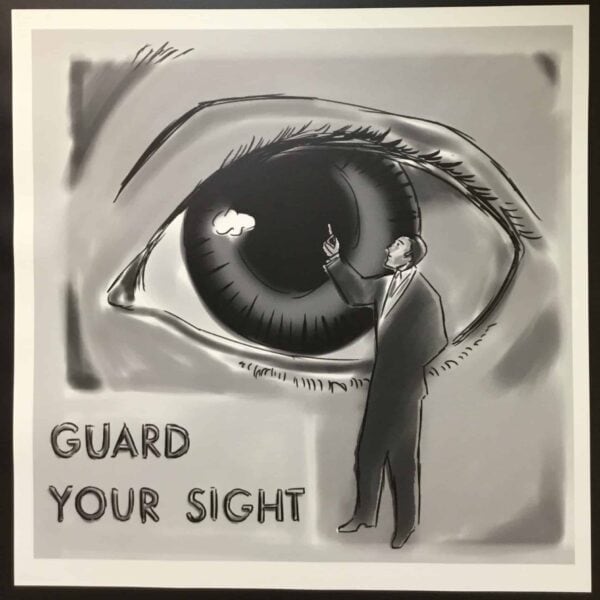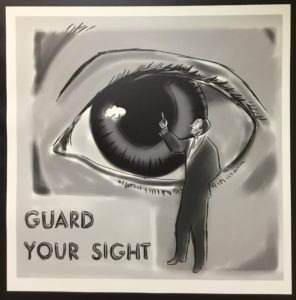
What is Dilation and Why Do I Need It?
January 22, 2019

An eye exam entails more than simply getting new glasses or contacts. Many people don’t realize that the most important aspect of the exam is checking the health of the eyes, both inside and out. If the eyes are not healthy, the glasses prescription is the least of everyone’s concerns. Our goal is to maintain vision with comprehensive dilated eye exams in people of all ages.
What is dilation?
Dilation is the process of widening the pupils, which are the black openings in the center of the colored part or iris. Pupils function to regulate the amount of light that enters the eyes. When in a dim or dark environment, the pupils will dilate, or get bigger, to catch as much light as possible. In a bright setting, the pupils will constriction, or get smaller, to block excess light from entering the eyes.
When examining the health inside the eyes, it is very difficult to see through a tiny pupil. However, the use of specific pharmaceutical eye drops temporarily dilates the pupils. So rather than examining the retina through a small, undilated keyhole, eye care providers prefer looking through a big, dilated window. Notice the difference between an undilated and dilated pupil, seen below.

Why do I need dilated?
A dilated exam is the only possible way to view the majority of the retina. There are many ocular conditions that may not have any signs or symptoms and can lead to permanent vision loss. Early detection and subsequent treatment is key. Conditions most notably observed are:
– Retinal holes, tears, and detachments
– Diabetic retinopathy (bleeding and/or swelling in the back of the eye related to diabetes)
– Macular degeneration
– Glaucoma
– Hypertensive retinopathy (blood vessel abnormalities and bleeding related to high blood pressure)
If experiencing signs of a retinal detachment, dilation is absolutely necessary to determine if a retinal detachment is present. Retinal detachment signs are new floaters (dark spots in vision), flashing lights, or curtain veiling (looks like a curtain is slowly coming down over the eyes). There are other conditions that can mimic a retinal detachment, but the only way to confirm is through a dilated exam.
What can I expect when getting dilated?
About 15 to 30 minutes after instillation, the dilation drops have two temporary actions – widening the pupils and suppressing the focusing system of the eyes. These effects can last for 2 to 6 hours depending on a variety of factors, such as the amount of iris pigmentation (light or dark colored eyes) and strength of drop used. In some cases, children will need to be dilated with a special drop that takes 12-24 hours for the eyes to return back to their normal state.
Since the drops limit the focusing system of the eyes, near vision is temporarily blurry for a majority of people. It is best to schedule the appointment for a time when you don’t have an abundance of near vision demands immediately after the exam.
Light sensitivity and glare may also be present while the pupils are enlarged. This can make driving a little more difficult for some. Most people drive after dilation with no problems, however, safety is our primary concern. If you feel unsafe or unsure how you will respond to the dilation, we ask that you arrange for someone else to drive after the exam. Wearing sunglasses after dilation helps minimize light sensitivity. Don’t worry, if you forget your shades, we’ll give you a disposable pair to take with you!

How often should I be dilated?
People with risk factors for retinal problems, especially diabetes, should be dilated at least once a year. If it is your first eye exam or you are a new patient to our office, we will also dilate your pupils at the visit. Dilation is safe for children, and even infants! Individuals who are young and healthy with no risk factors for ocular disease can be dilated every other year unless there is cause to dilate sooner. Even during the non-dilated exam years, the back of the eyes are still viewed with a lens, just through a small pupil. Most of the retina cannot be viewed, but important structures, such as the optic nerve, macula, and blood vessels are usually still visible. If there is ever a concern that warrants dilation, you can trust that we will provide quality care with thorough explanation of your eye care needs.
Preventative care is the focus of comprehensive eye examinations. Many conditions are only visible after dilation, making dilation an essential aspect of a routine eye exam. If you have never been dilated or it has been several years, please schedule an appointment for a comprehensive eye exam at Weber Vision Care. You’ll be glad you took a step in protecting your vision!